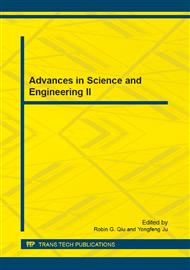[1]
M. Zur Muehlen, R. Allen, Workflow Classification Embedded & Autonomous Workflow Management Systems, workflow management coalition, March 10th, (2000).
Google Scholar
[2]
W. M. P., Van der Aalst, Three Good Reasons for Using a Petri-net-based Workflow Management System, in: Proc. of the Internationsl Working Conference on Information anProcess Integration in Enterprises (IPIC 96), pp.179-201, Navathe, S. and Wakayama, T. (Eds. ), Cambridge, Mass., USA, (1996).
DOI: 10.1007/978-1-4615-5499-8_10
Google Scholar
[3]
W. Sadiq and M. E. Orlowska, Analyzing process models using graph reduction techniques, Information Systems, vol. 25, 2000, pp.117-134.
DOI: 10.1016/s0306-4379(00)00012-0
Google Scholar
[4]
J. Desel and J. Bsparza, Free choice Petri nets, Cur&ridge Tructs in Theoreticul Computer Science, Cambridge UniversityPress, Great Britain, (1995).
Google Scholar
[5]
Feihu Hu, A multitasking collaborative scheduling method for workflow engine, China Patent lication number: 200510042888, (2005).
Google Scholar
[6]
G. Berthelot, Transformations and decompositions of nets, in: W. Brauer, W. Reisig, G. Rozenberg (Eds. ), Petri Nets: Central Models and Their Properties, Advances in Petri Nets, Part Ⅰ, Proceedings of an Advanced Course, Bad Honnef, September 1986, Lecture Notes in Computer Science, vol. 254, Springer-Verlag, pp.359-376.
DOI: 10.1007/3-540-17906-2
Google Scholar
[7]
T. Murata, Petri nets: properties analysis and applications, Proceedings of the IEEE 77 (4) , 1989, pp.541-580.
Google Scholar
[8]
M.T. Wynn, H.M.W. Verbeek, W.M.P. Van der Aalst, et al., Soundness-preserving reduction rules for reset workflow nets, Information Sciences 179, 2009, pp.769-790.
DOI: 10.1016/j.ins.2008.10.033
Google Scholar
[9]
B.F. Van Dongen, W.M.P. Van der Aalst, H.M.W. Verbeek, Verfication of EPCs: using reduction rules and Petri nets, in: O. Pastor, J. Falcão e Cunha (Eds. ), Proceedings of the 17th Conference on Advanced Information Systems Engineering(ACISE 2005), Porto, Portugal, June 2005, Lecture Notes in Computer Science, vol. 3520, Springer-Verlag, pp.372-386.
DOI: 10.1007/b136788
Google Scholar


